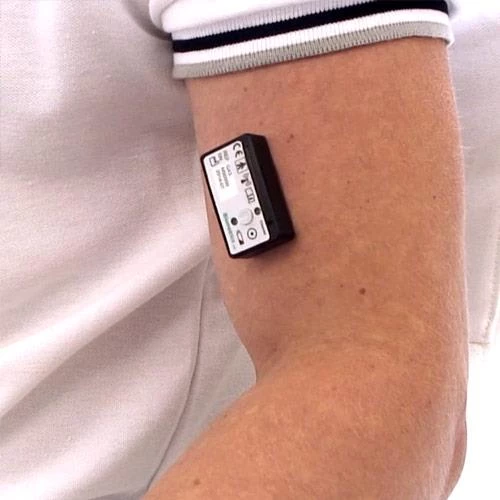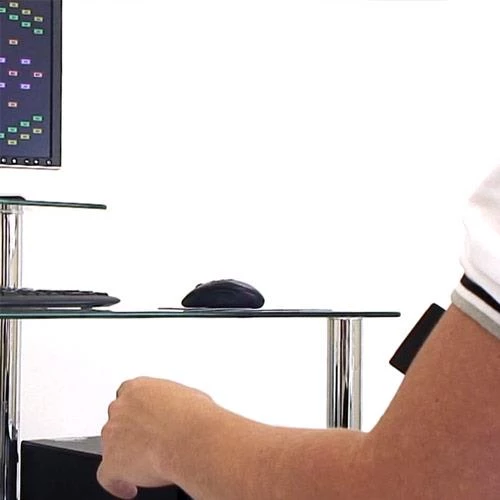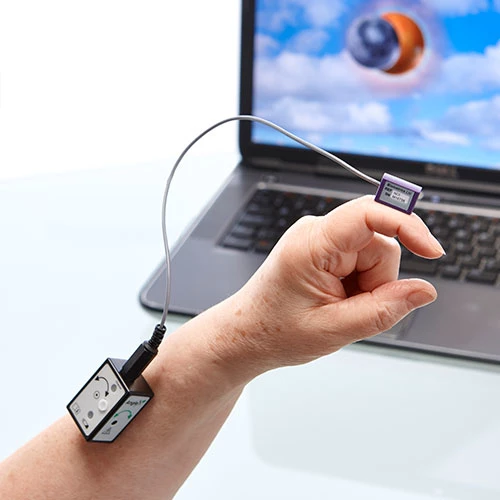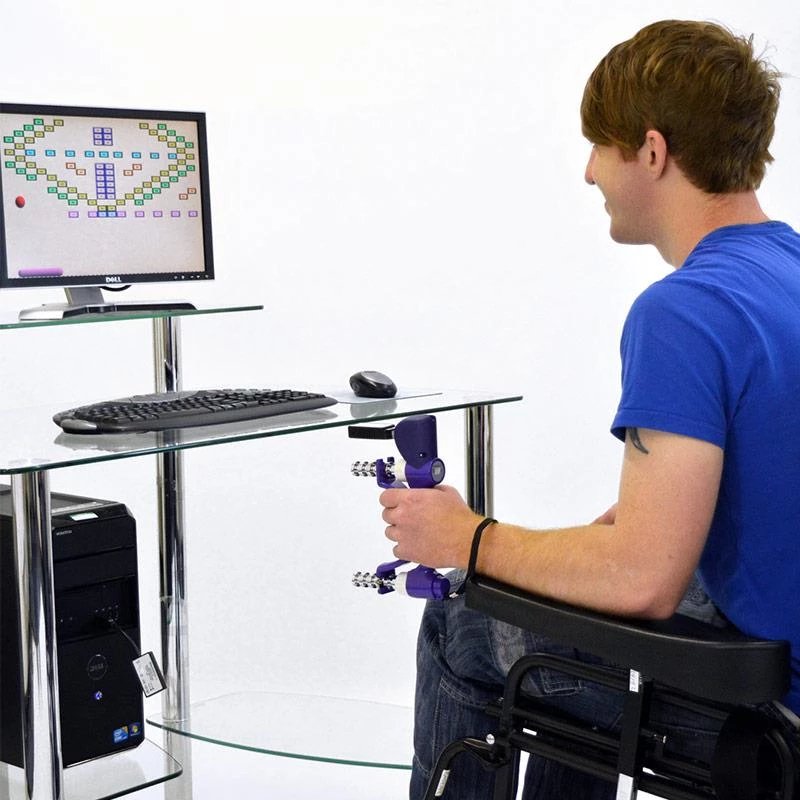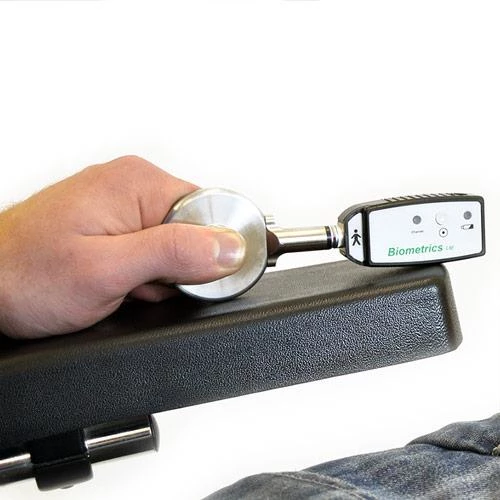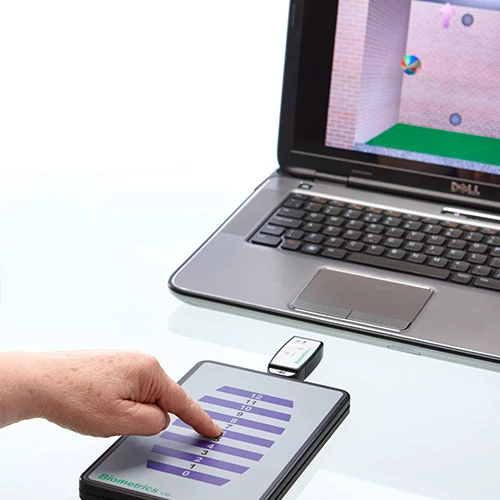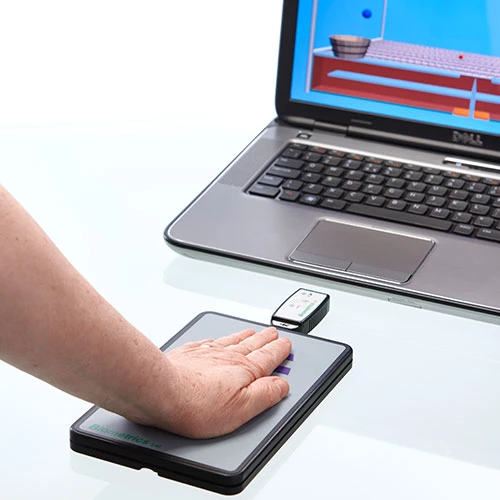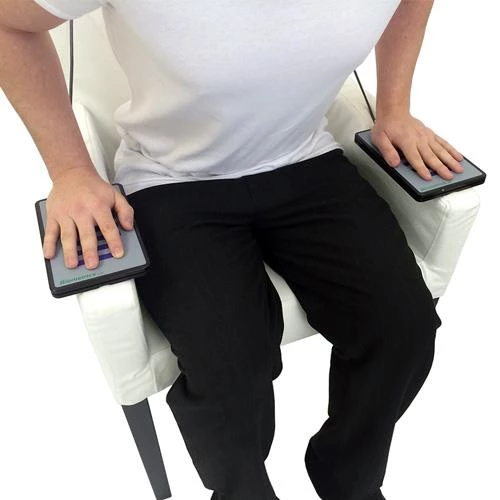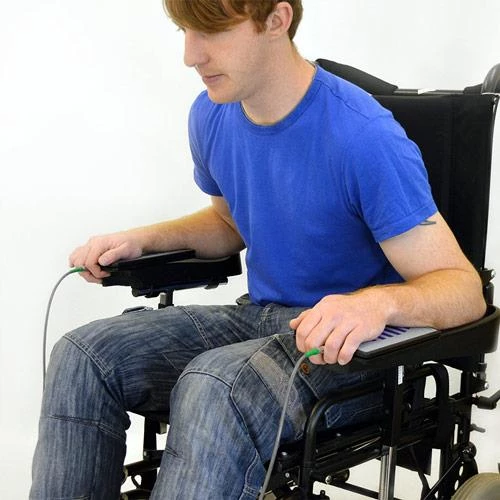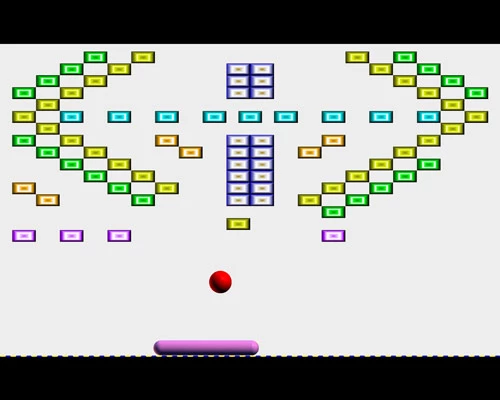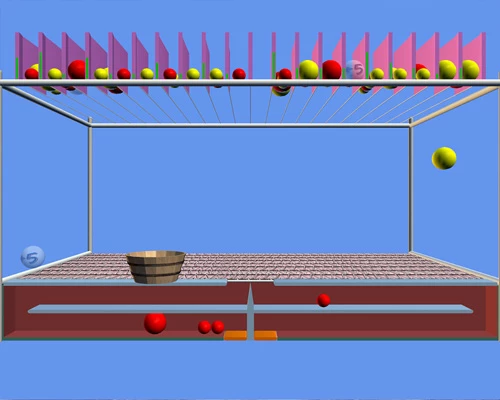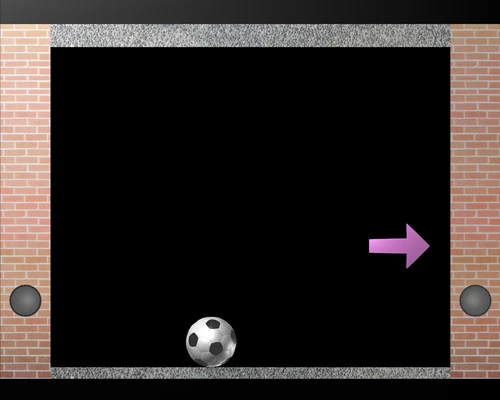Upper Extremity - Exercise
Any exercise undertaken by a patient with spinal injury needs to be, not only appropriate for the individual's capability but most importantly, it needs to follow an accurate assessment of the spinal lesion, thereby reducing any further risks of injury. Once exercise is prescribed it can enhance physical activity, the feeling of well-being and the health of the patient disabled by spinal injury.
E-LINK includes various devices that enable exercise for the Upper Limb to begin from where there is only a flicker of muscular activity through to exercising against gravity, with gradable resistance and for Grip and Pinch Strengthening exercise.
E-LINK devices, combined with motivational, innovative computerized Activities, help strengthen the Upper Limb to preserve the shoulder, arm and hand function so that the patient can achieve necessary activities for everyday living.
E-LINK Myo-EX
For the spinal injury patient, exercise can begin where there is very little or even no visible joint movement by using the unique Myo-EX. The sensor excitingly detects very small flickers of muscular activity and using surface EMG, provides immediate biofeedback to the patient through the visual movement of objects in the Activity. In order to score in the Activity the patient is encouraged for instance to match colors or hit a football against a wall. In turn the patient is then focusing on a smooth, efficient and co-ordinated movement to achieve the Activity rather than recruiting possible unnecessary compensatory movements.
- Myo-EX is ideal for wrist and elbow exercise, focused exercise on the shoulder musculature, and has even been used with certain facial muscles
- Biofeedback is immediate providing a high degree of motivation for exercise
- The precision sensor is designed to give superb quality of signal and can detect as little as 3-4 microvolts of electrical activity
- Full scale reaches up to 3000 microvolts for working with larger deltoid or bicep muscles
- The Myo-EX sensor is quick and easy to apply, with little to no skin preparation, ideal for even using in a busy therapy group situation
E-LINK AngleX
Where some joint movement is observed but it is insufficient as yet to grasp or hold other devices, AngleX sensors are ideal to use with spinal injury patients. They are simply attached close to the joint for exercise and respond to active movement against gravity. AngleX provides focused exercise for even the small DIP joints through to larger body joints of the Upper Extremity.
- AngleX encourages normal patterns of movement and discourages compensatory ones
- Fuss free application, ideal for busy therapy group sessions
- No skin preparation needed, simply apply to clean, dry skin using the medical grade tape, close to the joint to be exercised
- Baseline readings are taken in 1 degree increments for the patient's comfortable ROM. These are automatically entered as the range for the chosen Activity which can be graded to suit the therapy goals of each individual
- The small AngleX is used for the fingers, thumb and wrist
- The large AngleX is used for the forearm, elbow and shoulder
- Ideal for exercising from a small finger joint through to full shoulder movement
E-LINK Upper Limb Exerciser
If the spinal injury patient has sufficient grasp to hold items, the Upper Limb Exerciser with various tool handles is ideal for functional, repetitive active exercise. Resistance to the active movement can also be graded for muscle strengthening goals.
- Ideal for active and active resistive exercise of the fingers, wrist, forearm, elbow, and shoulder
- Baseline measurements of the patient's comfortable ROM are taken and automatically entered in the Activities chosen for exercise
- The range can be set to as little as 2 degrees ROM enabling exercise for patients with very little active movement and gradually graded over time to a full range of motion
- The resistance can be adjusted and graded according to need throughout the rehabilitation process for muscle strengthening exercise
- Simple to set up and quick to use - ideal for individual or group therapy sessions
E-LINK Dynamometer
The E-LINK Dynamometer is an accurate, sensitive device, registering as little as 0.1kg/lb strength measurements. This sensitivity enables formal grip strength evaluation to commence very early in the spinal injury patient's recovery and continue throughout the full lengthy rehabilitation process, monitoring ongoing progress.
Immediately following this precise evaluation, the Dynamometer is ideally placed to be used for unique isometric grip exercise combined with the innovative E-LINK Activities.
- The movement of the objects in the Activity is controlled by the application and relaxation of isometric grip within the set parameters
- Activities such as Load Ship (moving containers from the quayside to the hold on a ship) encourage the patient to exercise from full relaxed grip to their maximum application of force, including the option to sustain the grip for a determined period of time
- Other Activities such as Break It (moving a block to hit objects in a picture scene) encourage the patient to work to random points in the range thus addressing a functional application of variable grip strength
- The various Activities provide purposeful movement, isometric strengthening, motor learning and control as well as motivational entertainment for the spinal injury patient undergoing treatment
Mini Case History #1 - Using Dynamometer
Spinal Injury - Mini Case History #1
From a Senior Therapist in a Spinal Injuries Unit, UK
Mr D a 51 year old man who sustained a C4 Incomplete SCI (ASI D). Mr D was a highly motivated individual who became increasingly frustrated with his hand weakness during his rehabilitation. He found it difficult to recognize any progress with his hand function (specifically his grip strength) as this was relatively slow in comparison to gains he had made with his lower limb function. Mr D was assessed for an appropriate regime using the E-Link, Dynamometer.
He responded really well to using the games as a therapeutic challenge opposed to what he perceived to be general repetitive exercises. Mr D found had reduced proprioception in his hands and found it difficult to recognize achievements and was focused on the graphical results to monitor his progress.
E-LINK Pinchmeter
To assess the finer motor control in pinch grip, the E-LINK Pinchmeter easily and accurately measures the spinal injury patient's finer pinch strength from 0.1kg/lb measurement through to a maximum of 22kg (50lbs).
As with the E-LINK Dynamometer, the Pinchmeter is used for unique isometric Pinch Exercise and is ideal to use immediately following Evaluation.
- The Pinchmeter can be positioned in such a way as to address functional ADL goals e.g. key in the door, holding a pen, pressing a doorbell
- The Activities help address functional objectives. For example, applying force in Load Ship moves the crane to collect a crate and then the pinch grip need to be sustained for a determined length of time to load the crate onto the ship. Hence the patient is exercising the grip as would be needed to turn a key in a lock.
- The Pinchmeter is also perfect for fingertip desensitization exercise when needed for pain management.
E-LINK ForcePlate
The superb, versatile modularity of E-LINK enables the ForcePlates to be used in many clinical situations for the spinal injury patient – for seated balance exercise, bilateral Upper Limb weight-bearing through to the light touch of one finger on a single ForcePlate for desensitization exercise – ideal for the many diverse clinical situations facing clinicians in Spinal Injury Units.
Two ForcePlates can be connected to the X4 InterX Unit which is the USB interface to the Computer and may be used as follows:
- For seated balance or bilateral Upper Limb training baseline measurements are taken of the patient's comfortable limits of stability and these are used in the Activities for the single axis exercise (left/right or front/back). The parameters may be further graded to suit the patient's physical and cognitive state, ensuring the goals are achievable for each individual
- To accomplish the goal of an Activity the patient needs to load and unload the weight distributed over the ForcePlates
- Using the Jigsaw Activity for instance, encourages the patient to transfer weight (left/right or front/back), applying various degrees of force, in order to collect a Jigsaw piece and then place the piece in the Jigsaw which in turn distracts the patient from their pain, weakness or disability and motivates them to exercise
- The Activities can be saved in a set sequence and used again for the next session thus saving set-up time for the therapist as well as familiarising the patient to the Activities
- A single ForcePlate may be used with either the E-LINK Dongle for a wireless interface to the Computer and greater portability or with the X4 InterX unit
- One single ForcePlate is perfect for weight bearing exercise, from the touch of one finger through to full weight bearing on one limb
- One single ForcePlate is perfect for weight bearing exercise, from the touch of one finger through to full weight bearing on one limb
- Each ForcePlate registers weight as little as 0.1kg/lb through to 100kg (220lbs)
- ForcePlates are ideal for light touch/short duration exercise in pain management programmes through to full weight loading for strengthening joints and encouraging specific movement patterns
E-LINK Activities
The Activities incorporate a fun element into each therapy session, maximizing the spinal injury patient's motivation for exercise.
- Baseline measurements are quickly and accurately taken with various E-LINK devices and automatically entered as the range for the chosen Activity which can be further graded to suit the patient's needs or therapy goals
- Various Activities with eye-catching graphics are designed as the visual stimulus for the patient to engage in gross end range movement through to finer controlled movement
- Biofeedback is displayed in real-time to the patient through the movement of objects on the screen
- A % score and an Activity distribution graph are generated at the end of play for further objective analysis, for discussion with the patient as a motivation opportunity and for re-assessment of therapy goals
- Following the Exercise session E-LINK Software generates documentation in both graphs and tables which can be entered into the patient's record or even printed for the patient to keep
As well as E-LINK addressing physical issues for the spinal injury patient, the Activities also help address various cognitive and perceptual issues:
- Concentration
- Attention Span
- Focusing
- Spatial Relationships
- Concrete Reasoning
- Sequencing
- Neuromuscular Re-education and Control
- Cognitive Remediation
- Decision Making
- Color Perception
- Responding to Instructions
- Visual Tracking and Scanning
- Hand/Eye Coordination
- Purposeful Activity
- Sensory Integration
- Visual Field and Visual Attention

